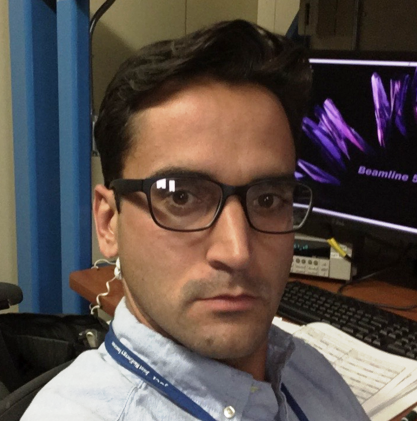Research Focus
Dr. Pereira received a PhD in Molecular Biophysics from Physics Department of São Paulo State University. After his postdoc at University of California – Berkeley, Dr. Pereira joined the Structural Biology group at JBEI. He is a Scientist of the Molecular Biophysics and Integrated Bioimaging Division at the Lawrence Berkeley National Laboratory’s Biosciences Area.
Dr. Pereira’s research focuses in Protein X-rays crystallography to understand at the atomic level the function of a diverse range of enzymes related to several JBEI projects from Deconstruction, Feedstocks, Biofuels and Bioproducts, and Technology Divisions.
Projects
- Structural studies of the IL-responsive repressor EilR in complex with its DNA operator and ligands. Ionic liquids (ILs) are emerging as superior solvents for the pretreatment of biomass for the microbial production of biofuels. An IL-resistance mechanism has been identified consisting of two adjacent genes from Enterobacter lignolyticus. These genes retain their full functionality when transferred to an Escherichia coli biofuel host, with IL resistance established by an inner membrane transporter, which is regulated by the IL-responsive repressor EilR. To understand the regulatory mechanisms at the atomic level, we are using X-rays crystallography to elucidate the structures of EilR transcription factor in complex with high affinity inducers, as well as EilR in complex with its operator DNA.
- Investigating of a bacterial Acyl-CoA Dehydrogenase. Acyl-CoA Dehydrogenases (ACADs) are a large family of flavoenzymes that catalyze the oxidation of fully saturated acyl-CoA thioesters to their α,β-unsaturated counterparts. The structural studies of ACAD in complex with its natural substrates and substrate analogs can elucidate the unusual mechanism of the bacterial ACADs.
- Understanding the protein crystallization process. Correlating crystallization conditions and high-resolution protein structures, it is possible to better understand the influence that a particular solution has on protein crystal formation. Ions and small molecules such as buffers and precipitants used in crystallization experiments were identified in electron density maps, highlighting the role of these chemicals in protein crystal packing. Using statistical analysis of the Biological Macromolecular Crystallization Database, combined with previous knowledge about crystallization reagents, a crystallization screen called the Berkeley Screen has been created. The Berkeley Screen has been extensively used to crystallize target proteins from the Joint BioEnergy Institute and the Collaborative Crystallography program at the Berkeley Center for Structural Biology, contributing to several Protein Data Bank entries and related publications.
Featured Media
Crystallization Screen Created by JBEI Scientists Reaches the Market
How X-ray crystallography is used in biofuels production
Featured Publications
Complete list from Research Gate
- “Berkeley Screen: a set of 96 solutions for general macromolecular crystallization”, J Appl Crystallogr. (2017)
- “Structure of the human TRiC/CCT Subunit 5 associated with hereditary sensory neuropathy”, Scientific Reports (2017)
- “Principles for designing proteins with cavities formed by curved β sheets”, Science (2017)
- “Structure and mechanism of NOV1, a resveratrol-cleaving dioxygenase”, Proc Natl Acad Sci U S A (2016)
- “De novo design of protein homo-oligomers with modular hydrogen-bond network-mediated specificity”, Science (2016)
- “Structural and Biochemical Characterization of the Early and Late Enzymes in the Lignin β-Aryl Ether Cleavage Pathway from Sphingobium sp. SYK-6”, J Biol Chem. (2016)
- “Exploiting the Substrate Promiscuity of Hydroxycinnamoyl-CoA:Shikimate Hydroxycinnamoyl Transferase to Reduce Lignin”, Plant Cell Physiol. (2016)
- “Structural Basis of Stereospecificity in the Bacterial Enzymatic Cleavage of β-Aryl Ether Bonds in Lignin”, J Biol Chem. (2016)

